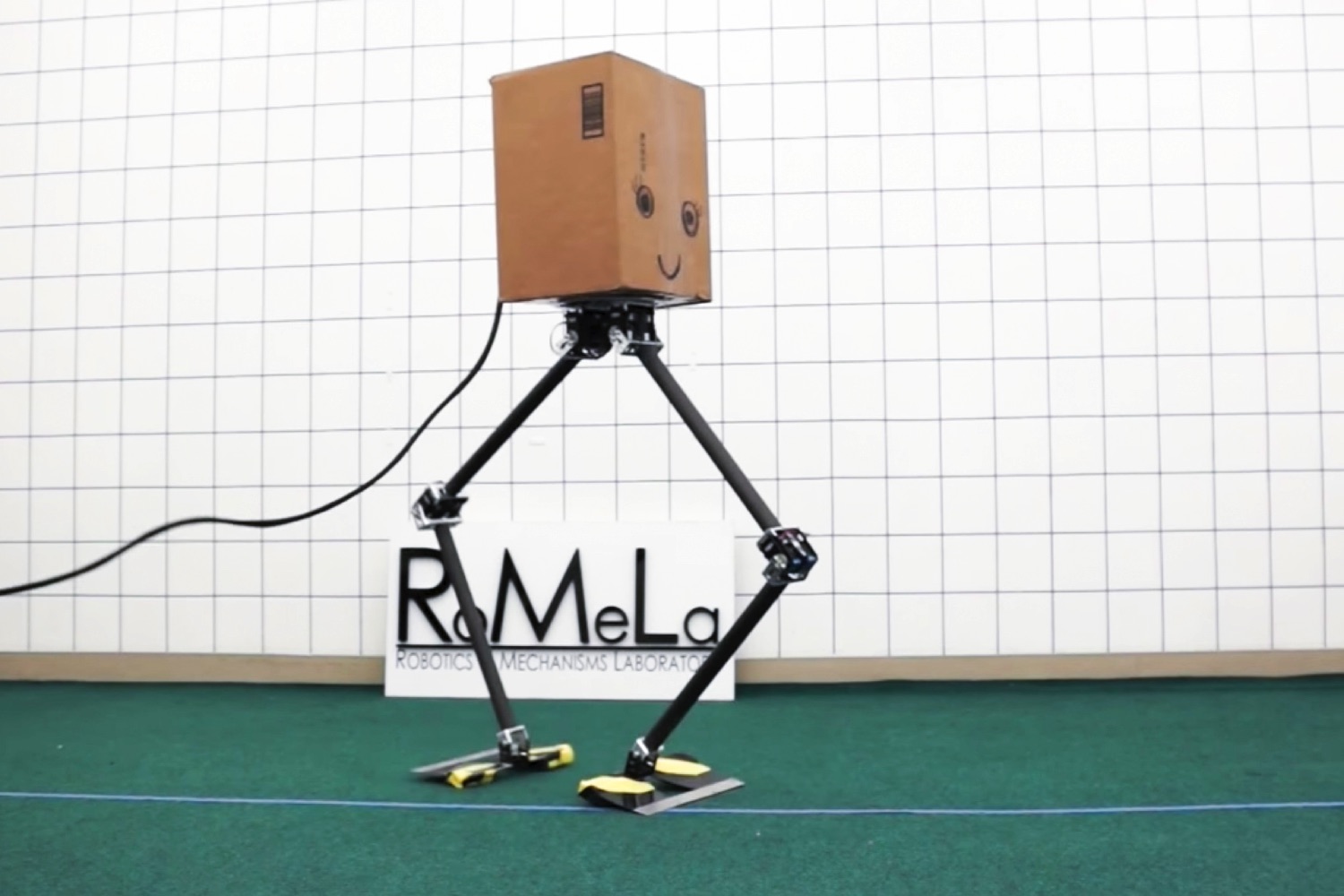That is based on two robots Hong showed off at this week’s 2016 IEEE International Conference on Humanoid Robots. Exhibited at the Cancun event, Hong’s creations included a robot with ultra-thin articulated legs and a helium balloon body and a bandy-legged robot with a smiling cardboard box for a head.
The two are named BALLU (Buoyancy Assisted Lightweight Legged Unit) and NABiRoS (Non-Anthropomorphic Bipedal Robotic System) — and while they may look unusual, they both represent fascinating experiments in building robots that are able to overcome many current limitations.
“As we have seen at the [DARPA Robotics Challenge], humanoid robots are still too slow, too unstable, too expensive, too complicated, and too dangerous,” Hong told Digital Trends. “I do not believe humanoid robots will be able to be used mainstream anytime soon. However, we do need robots to be able to move around in human environments — climb stairs, walk on uneven terrain, et cetera.”
This is where BALLU and NABiRoS enter the picture.
BALLU came about from Hong’s team asking: “What if we could change the direction of gravity?” to create a robot which could not fall over. The result is a robot with a body lighter than air, that is so safe it could even move around a baby, that is low cost and lightweight, and can even walk on water or a tightrope. On the downside, it cannot be outdoors when it is windy and nor can it carry heavy loads.
NABiRoS, meanwhile, can move with impressive stability, speed, and safety. Like BALLU, it does not conform to an exact human form, but it can do certain things a lot better than robots which do follow this model — such as climbing stairs. A future iteration, set to be unveiled in 2017, improves the concept yet further by using four limbs instead of two.
“Our lab RoMeLa is very well known for coming up with such out-of-this-world creative robots,” Hong said. “I was a professor at Virginia Tech for 11 years and moved to UCLA about 2.5 years ago. The move was a very difficult one and we had to start everything from scratch and build up RoMela from the [ground] up.”
From the look of things, though, Hong has not wasted any time in getting back to asking the kinds of questions that could lead to the next big breakthroughs in robot locomotion.
“We have more amazing things up our sleeves,” he said. “Expect to see even more great things [coming] out of RoMeLa!”
For some reason, we have no problem believing him.







